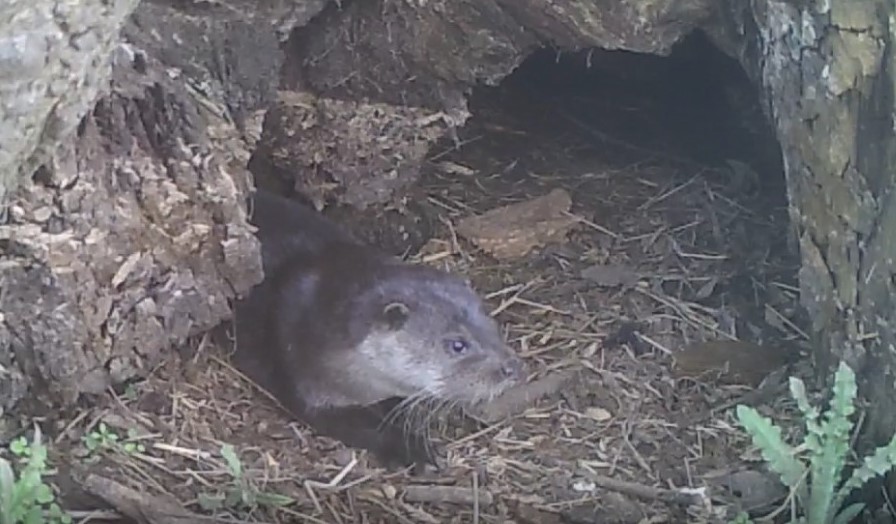Camera Trapping
1st July 2017
Camera-trapping is difficult at the best of times, what with waving vegetation, birds and small rodents triggering cameras as well as cows scratching their bottoms on cam-trap emplacements. To add to this, we now have a Ninja badger who has taken great exception to our equipment at one site and attacks it with great panache! Click here to see Ninja badger going for cam-trap This leads to an aspect of cam-trapping that is often overlooked when monitoring mammal activity; whether the act of putting up/maintaining cam traps, or the cam-traps themselves causes any disturbance to the target mammal. I have […]
11th May 2017
To sex otter, firstly you need to have your cam trap set good and low so that you can see the side profile from a low angle. Elevated cameras, for example ones set on trees angled downwards will not yield a great deal to go on to sex otter, neither will cam traps set at a distance of over 2-3 m from the otter. Don’t forget, that in the UK you need a licence to cam-trap at resting sites, but you can get informative footage at spraint sites where otters also frequently urinate. Taking still shots are not as informative […]
17th April 2017
Meet the star of this post, a super-chilled dog otter. I have often wondered what would happen with a head-on encounter between otter and badger. I thought that the larger badger would have the edge if push came to shove. We have had records of both species using one structure for resting and far more recordings of badgers visiting otter holts to scent mark and scratch about, go in for a nosy about and generally leave their scent all over the place. So far, this doesn’t seem to have put off any otters from using holts although we haven’t analysed […]
15th March 2017
We have a number of otter resting sites which we are camera-trapping in collaboration with Edinburgh Napier University. Each site is cam trapped for 12 months to quantify activity at resting sites among other things. During our years of camera-trapping, we have seen several unfortunate otters with an injured (?) eye. The first one was a female with a well -grown cub, and we have had a juvenile otter and another adult all at very distant sites so not in any way connected (different catchments, one in the west of Scotland, this one in the Borders, one in Fife etc) […]





